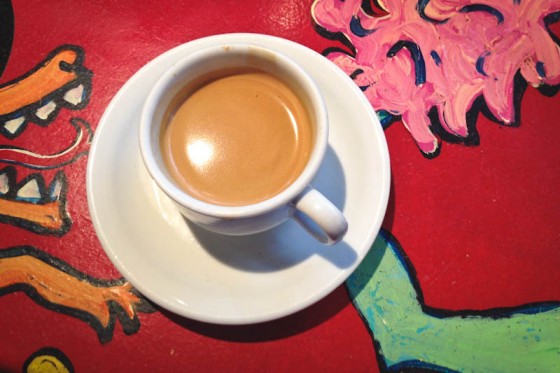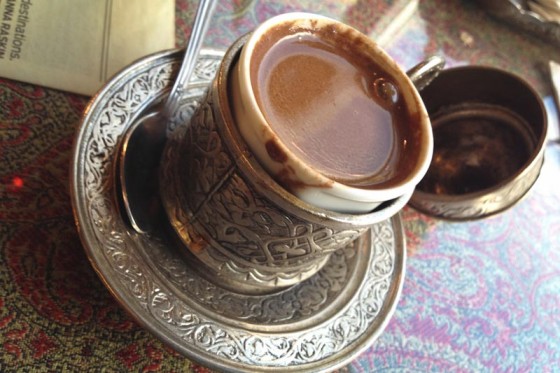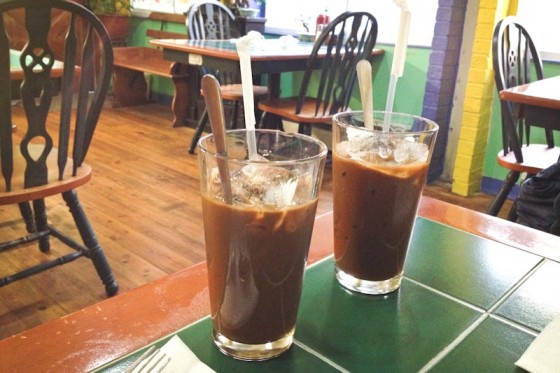A guide to the diverse international coffee scene that often flies below our over-caffeinated radar.
Starbucks may have made “quad venti breve latte” a part of our collective vocabulary. But international wonders like dark Turkish coffee and caramelized Cuban cafecitos often go unnoticed in Seattle.
Here are the first few steps on a caffeine-fueled world tour available right inside our city:
Turkish Coffee (Türk kahvesi)
The story: A hundred years after coffee was first brewed in the Sufi monasteries of the Arabian peninsula, Turkey was the beating heart of a brave new caffeinated world. Constantinople boasted 600 coffee houses, and the mystical black brew had become the epicenter of civic life. Where coffee had first only been used for its medicinal value, the Turks figured out how to turn the little black beans into a highly sought-after comestible.
Through the Mediterranean and beyond, most words for coffee and café derive directly from the Turkish kahveh.
“What drip coffee is here, Turkish coffee is to us,” explains Nado Khass, a Palestinian-American barista at B&O Espresso in Ballard. “Shops brew huge pots in the mornings, and people drink it all day.”
The coffee: Is brewed with beans pulverized at a grinder’s highest setting. The resultant powder is added to hot water sans filter and boiled down to a concentrated final product. Cardamom and mastic are added, sometimes even ground together with the beans before steeping. Sugar may be stirred in until each small serving is syrupy-sweet and viscous.
When the grounds have settled in their brewing pot, or cezve, the coffee is poured carefully into intricate metal cups complete with delicate lids and handles. Each few-ounce serving is presented very hot and sipped slowly, the gritty coffee sludge left in the last half-inch of liquid at the bottom of the cup.
In Seattle: Turkish coffee is not hard to find. Coffee shops and restaurants of many persuasions – from Seattle Met’s Restaurant of the Year Mamnoon, to Wallingford’s diminutive gelato shop Fainting Goat — offer the specialty, often as accompaniment to baklava or another dessert.
One newer Seattle take is Fonté Coffee’s Turkish Latte, which brings steamed milk to the coffee traditionally taken black. Epic Ales of Sodo once seized the same inspiration for its Otto-Optimizer coffee-cardamom porter.
Three places for Turkish Coffee: Café Turko, Fremont || B&O Espresso, Ballard || Turkish Delight, Pike Place
Vietnamese Coffee (cà phê sữa đá)
The story: Fast forward 400 years. Coffee, after oil, is the second-most traded commodity on the planet. It’s no surprise that in the mid-1970s Vietnam, anxious to rebuild after the ravages of war, was eyeing the money to be made in that market.
Rather than plant Coffea arabica, the bean that makes specialty coffee around the world, Vietnamese farmers turned to the hardier, disease-resistant Coffea canephora. Though the fruit of this plant, Robusta coffee, is much more easily cultivated and packs a caffeine punch almost twice that of Arabica, Robusta is not known for its superior flavor. Nevertheless, conglomerate coffee companies like Folger’s and Maxwell House began buying the cheap Vietnamese Robusta as filler for their canned coffees.
Today Vietnam, behind Brazil, is the second largest producer of coffee in the world, and almost all of their output is Robusta.
The coffee: In spite of Robusta’s notoriety, the Vietnamese oversupply has made it a common drink in the country. To mask off flavors, retailers roast the beans as dark as possible — Trung Nguyên is common in Vietnam, while New Orleans’ chicory-mixed Café du Monde is frequently substituted by Vietnamese expats.
The coffee is brewed in single-cup presses called phins, and condensed milk — widely available due to the difficulty of storing fresh dairy in a tropical country — is added for sweetness. The resultant Vietnamese coffee can be taken hot or iced, though iced (cà phê sữa đá) is most common in the warm country.
In Seattle: Though iced coffee doesn’t always appeal on a rainy day, both hot and iced preparations are common in phở and bánh mì shops across the city.
Three places for Vietnamese coffee: Spice Orient & Pho Bistro, Downtown || Bahn Mi Unwrapped, University District || Green Leaf Vietnamese Restaurant, International District
Cuban Espresso (Café Cubano)

The story: Few crops have been more integral to the Cuban economy than sugar and coffee. It makes sense that the two should marry in the de facto national drink, the cafecito. Before the government nationalized coffee production and the industry began to tank, coffee overshadowed sugar production for some time. The arrival of Italian espresso machines on the island served as the necessary catalyst to combine the two into a national obsession that continues to this day both on and off the island.
The coffee: In Cuban espresso, also known as café Cubano or a cafecito, the first few drops of an espresso shot, pulled directly over raw sugar crystals, are stirred vigorously, melting to create a sumptuous caramel-colored layer of foamy espumita that sits atop the shot as the remainder is added. When no espresso machine is available, a variation involves the same mixture brewed in a stovetop espresso pot.
In Seattle: Cuban espresso is easily made, and works as a versatile base for drinks from Americanos to mochas. Yet it is not often ordered, perhaps because it is not prominently featured on most espresso menus. Still, many locals are die-hard fans.
There is a locally popular variation of Cuban espresso in which raw sugar is added directly to the portafilter of an espresso machine with the grounds so that hot water courses through the sugar, caramelizing as it goes. There is no evidence to suggest that this is traditional, but the result is nearly identical to a classic Cubano.
Three places for Cuban Espresso: El Diablo Coffee Co., Queen Anne || Geo’s Cuban & Creole, Ballard || Monorail Espresso, Downtown



